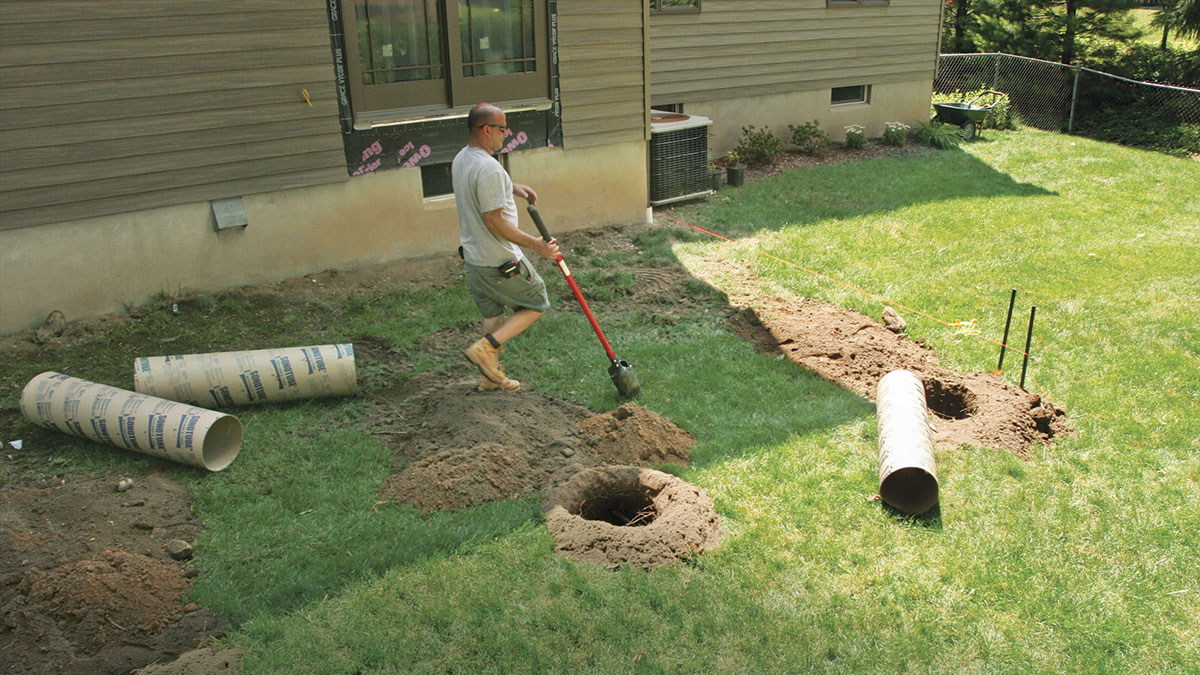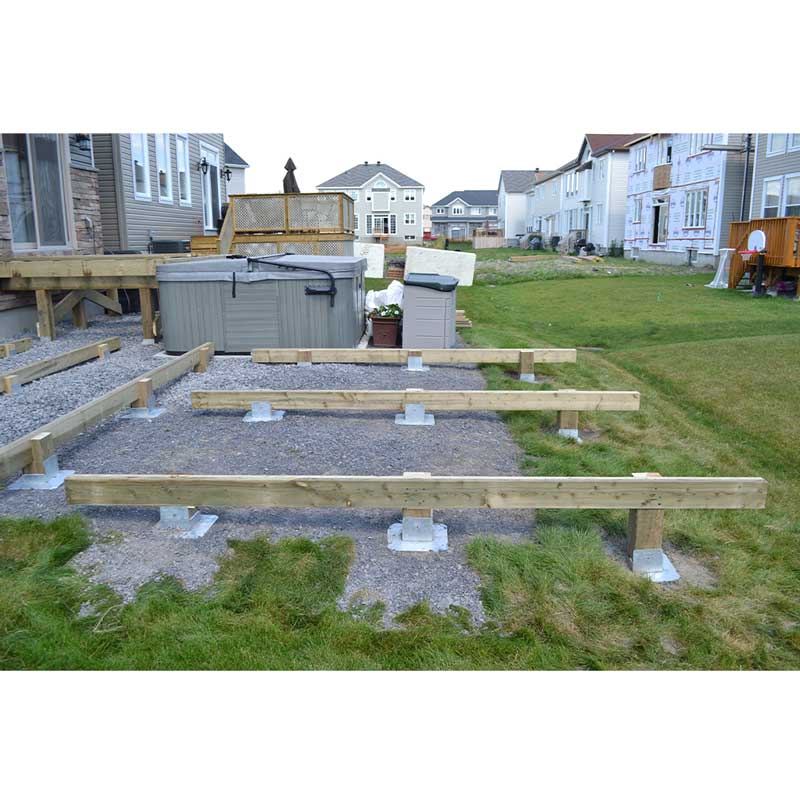Selecting the Right Deck Footings for Stability and Resilience
The long life and security of your deck depend heavily on the type of grounds you choose, as they supply the vital support and stability to withstand the examination of time. In this conversation, we will discover the different types of deck footings, consider the crucial aspects to consider when making a decision, and dig into the pros and disadvantages of various options.
Sorts Of Deck Grounds
These grounds consist of a cylindrical hole filled up with concrete, which supplies a strong structure for the deck blog posts. Concrete pier grounds are reasonably easy to install and use superb security, making them a prominent option for numerous deck jobs.
These footings are installed by screwing them right into the ground, which produces a safe foundation for the deck. They also permit for simple adjustment and leveling of the deck if needed.
Conversely, some building contractors go with precast concrete footings. These grounds are made from resilient concrete and come in numerous shapes and sizes to fit different deck designs. Precast concrete grounds are hassle-free to set up and supply a secure base for the deck framework.
Ultimately, an additional choice is the post-in-anchor footing system. This sort of footing involves driving a steel anchor into the ground and connecting it to the deck message. It provides flexibility in regards to placing the deck articles and is appropriate for decks with light-weight frameworks.
When picking the right sort of deck ground, it is important to consider aspects such as soil conditions, deck tons, and local building regulations (Deck Footings). Consulting with a professional service provider or structural engineer can aid ensure the proper ground is chosen for a risk-free and secure deck
Variables to Consider When Selecting Grounds
When picking the suitable footings for a deck, it is crucial to very carefully take into consideration numerous factors such as soil problems, deck load, and adherence to local building ordinance. These variables play a considerable role in making certain the security and toughness of the deck structure.
The type of dirt on which the deck will certainly be developed establishes the type of footings needed. On the various other hand, decks built on clay or large dirts may call for grounds that can suit the dirt's propensity to increase and agreement.
An additional important element is the deck load. The weight of the deck, consisting of the products utilized and any kind of prospective online tons such as furnishings or celebrations, must be taken into account when choosing footings. The footings should be created to bear the weight of the deck and disperse it uniformly to prevent any structural problems or failings.
Last but not least, adherence to neighborhood building ordinance is paramount. Structure codes differ from area to region, and it is important to follow the particular needs set by the regional authorities. Deck Footings. These codes make certain that the deck is developed safely and fulfills the needed standards for structural integrity and load-bearing capability
Concrete Footings: Pros and Disadvantages

Concrete footings use numerous advantages and drawbacks when made use of as the foundation for a deck. On the favorable side, concrete footings supply superb stability and resilience.
An additional advantage of concrete footings is their convenience. They can be put right into various sizes and shapes to suit various deck styles and arrangements. Concrete grounds can be personalized to fit the particular demands and needs of the deck structure.
However, there are likewise some drawbacks to making use of concrete footings. This can raise the overall expense of the deck job and might require expert aid.

Helical Piers Vs. Sonotubes: Which Is Better?
In taking into consideration the structure choices for a deck, the comparison between helical piers and sonotubes is important in figuring out the superior choice. They are twisted into the ground making use of hydraulic machinery, offering a long lasting and stable foundation for the deck.
The helical plates on the piers produce a solid hold with the dirt, shifting or protecting against any type of motion of the deck. Sonotubes, on the Learn More Here other hand, rely only on the concrete filling up for stability, which might not use the exact same level of strength and resistance.
In regards to installation, helical piers are fairly much easier and faster to set up contrasted to sonotubes. The hydraulic equipment utilized to turn the piers into the ground makes sure a reliable and fast procedure. Sonotubes, on the various other hand, call for excavating openings and pouring concrete, which can be time-consuming and labor-intensive.
Additionally, helical piers are an even more flexible option. They can be used in various dirt problems and can be adjusted or strengthened if required. Sonotubes, on the other hand, might require additional assistance, such as rebar, in certain soil problems or areas with high lots needs.
Picking the Right Footings for Your Deck's Measurements
For optimum structural honesty, it is essential to carefully choose the appropriate grounds that align with the measurements of your deck. The dimensions of your deck, including its size, length, and elevation, play a substantial function in identifying the kind and dimension of grounds required.
When choosing footings for your deck, it is essential to think about the load-bearing capacity of the dirt. The weight of the deck, incorporated with the weight of any type of furnishings or individuals on it, exerts a significant pressure on the grounds (Deck Footings). It is crucial to pick footings that can effectively sustain this weight without sinking or shifting over time.
The size and shape of the grounds must also be considered. Larger decks with greater dimensions call for bigger grounds to provide enough security and support. The form of the footings, whether they are square or rounded, depends on the style and design of the deck. Furthermore, the deepness at which the footings are mounted should be established based on the Visit Website frost line in your area to stop any type of heaving or shifting as a result of freezing temperature levels.
Verdict
In conclusion, selecting the ideal deck grounds is essential for making sure security and resilience. Aspects such as the kind of grounds, the deck's measurements, and the pros and cons of different choices must be taken into consideration.
These footings consist of a cylindrical hole filled up with concrete, which gives a strong structure for the deck blog posts. Concrete pier grounds are relatively easy to install and offer outstanding stability, navigate here making them a prominent option for lots of deck jobs.
Precast concrete grounds are practical to set up and supply a secure base for the deck framework.
It uses versatility in terms of placing the deck articles and is appropriate for decks with light-weight frameworks.
Concrete footings use a number of benefits and downsides when utilized as the structure for a deck.